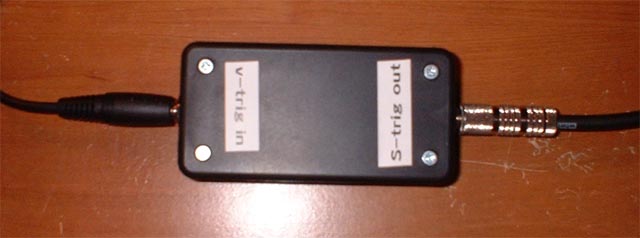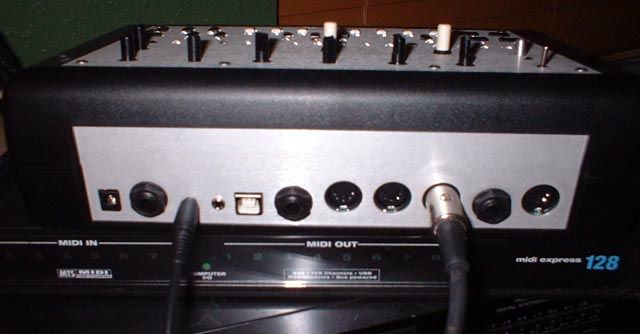Back in the early 90s when analog synths were less popular, I had the good fortune to lay my hands on a Korg PolySix for the astonishingly low price of $100. (I told you they were less popular). This particle-board end-capped synth really opened my eyes to the possibilities of a "true analog" synth. Sure, the thing didn't have MIDI, but that gritty and gigantic sound (especially in unison mode) made me an instant fan. The fact that it has an arpreggiator and effects were just icing on the cake.
I played the PolySix for about six months when the unthinkable happened: I wrecked the synth. See, it was a crazy era. Clinton had just won the presidential election, grunge had a stranglehold on music, and the final episode of Cheers was airing on television. It was during that final episode when something very bad occured. While celebrating the final episode (everyone celebrates everything at age 22), I managed to spill a drink on the PolySix while it was powered up. I don't remember much what the synth did when this happened. I was too worried about how to unplug the power post haste. Need less to say, I was not happy, but I decided to try to ressurect it after a few days of air drying, careful cleaning, and lots of prayer.
Unfortunately, no prayers were answered that month. The synth was dead. Sure, it powered up, but all it would do is make a warbley sound. Something was very wrong with it. Being a graduate student with no free time, and even less money, the synth eventaully found its way to my friend's basement where it was swallowed like in a black hole, never to be seen again.
I hadn't forgotten that SOUND, though. And vowed to eventually find another one. Unfortunately, that year was probably the last time I was going to find the PolySix at such a low price. Techno was gaining traction and analog synths (and other vintage noisemakers) were regaining their popularity. Old crusty gear was being scooped up everywhere. And it hasn't stopped yet. (it's now 2009) The PolySix was no different. It's popualrity grew, as did its average selling price.
Soon, college turned into a job. A job turned into marriage. Marriage turned into kids. Before too long, it was time to think about piano lessons for the kids. And that made me think about music again. Now that I had a couple bucks in my pocket and places like eBay, craigslist, and VSE made gear acquisition so easy (and if you had a watchful eye, not that expensive), I finally got my hands on a Korg PolySix again. The synth is in great shape, with one exception: it is missing the button cover for the POLY button. (Anyone know where I can find one? UPDATE: found one!). Luckily, the synth has no battery leaks (the previous owner had already installed a new one).
Because the PolySix is older, it predates MIDI. There used to be several places where you could buy MIDI interface retrofits, but now there is only a VERY expensive kit from Kenton and one slightly sketchy looking DIY kit. (unless I'm missing something? UPDATE: Indeed I was! I found, bought, and installed a very good interface here. Highly recommended!)
So, without a bunch of expense or lots of work, there's no other nice way to connect the synth to a computer, except for the arpeggiator trigger input. The Korg PolySix uses the so-called "S-Trig" (Switch triggers). And the only gear I have on hand that can output a trigger signal is a x0xb0x, which can send "V-trig" (Voltage triggers). After doing a little research, I found a simple schematic online that converts v-trig on the input to s-trig on the output.

The beautiful thing about this project is that it can be built using simple parts from Radio Shack (yes, I know it's hard to believe these days, but Radio Shack can actually provide all the parts you need, for this project at least). And what's better than being able to pick up the parts for the project at your local mall? The price is so low that you can build it for a mere ten bucks, including a fancy case.
Total cost: $10.25 if you already have a cable. Not too shabby.
On the scale of difficulty, this is a pretty simple project to solder. Just follow the schematic closely and make sure that each pin on each component is connected as described in the plans. This project is simple enough that you can forego a circuit board altogether. It can get a little hairy juggling all the pins this way, though, so I pulled out a small piece of perfboard that was in my junk box, a leftover from a previous project. This made the solder job considerably easier (and it's not that bad to begin with), but it did take a little bit of extra mental gymnastics to make sure that everything was in the right place. Because my local Radio Shack was out of 10k resistors (say what?!), I had to improvise and solder together three separate resistors in series to achieve the same 10k value. Less than ideal, but it saved me a trip to another town for a 99 cent part. This is what my completed project looks like on the inside. The input is on the left side and the output on the right. The labels are from a simple label maker. The wires were just some scraps I had lying about my electronics junk box. There is no rhyme or reason to their coloring. Also, I had to drill two 3/8" inch holes to accomodate the 1/4" jacks.

Once you've built the convertor, connect its s-trigger output to the arp trigger input on the PolySix

Next, connnect the v-trig input of this box to the Gate trigger of the x0xb0x and connnect the MIDI cable between your computer's MIDI interface output and the x0xb0x MIDI input. Put the x0xb0x in Pattern (MIDISYNC) mode and make sure that the pattern you select has notes entered in it. (interestingly, the x0xb0x pattern will affect how the arpeggiator triggers, but synced to the tempo of the computer software.)

Finally, make sure that your software sequencer is outputting MIDI sync. I had to adjust a MIDI sync setting in Logic's preferences. YMMV
If everything goes off without a hitch, you should now be able to trigger the x0xb0x and in turn the the PolySix arpeggiator by pressing play on a MIDI track in your sequencer. Neat!
© 6 MAY 2009 (Updated 4 AUG 2009) - E. Tejkowski